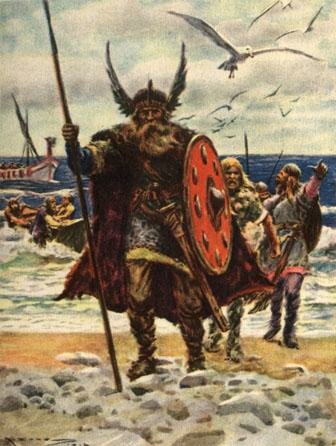10 Truly Badass Women of the Renaissance
Suggested by SMSWomen have always had a role in history. No matter what corner of the world you search, you can be sure that in the history of any nation, is a woman who left an impact. Whether it was through beauty, chastity or the ability to be cunning and rule with an iron clad fist; there is a woman in every culture throughout history; including “The Time of Enlightenment”. Before the fire was lit under women’s liberation, there were women who were striking the matches.
10. Margaret of Anjou (1429-1482)

Married to King Henry VI, Margaret of Anjou was the born the second child to Rene I of Naples and Isabella Duchess of Lorraine. She was born into the house of Valois-Anjous, in Duchy of Lorraine. Married to King Henry VI, she became the Queen of England for the first time from 1445 to 1461 and again from 1470 to 1471. She was also the Queen of France for eight years, beginning in 1445.
A main player in a series of civil uprisings dubbed the “War of the Roses”; Margaret of Anjou headed the Lancastrian clique. Henry’s recurrent bouts with craziness led to Margaret leading the country in his stead. In 1455, she excluded the Duke of York’s clique, sparking a civil feud that would last for more 30 years and making her responsible for the thousands of death. One of the deaths affected her personally, as it was that of her only son; Edward of Westminster. Prince of Wales was killed in the Battle of Tewkesbury.
It was during the battle that took the life of her son that the Yorkists defeated the Lancastrians and Margaret was taken prisoner. Four years later, in 1475, her cousin Louis XI of France paid for her freedom. She lived the rest of her years out in France, penniless.
9. Catherine of Aragon (1485-1586)

Catherine of Aragon held a few titles in England. Although her hand was promised to his brother when she was only 3 years old, the death of Prince Arthur of England put her in the position to become the first wife of Henry VIII; making her the Queen of England. After his death, as the wife of the Prince of Wales; she was the Princess of the land. In addition to those titles, she was also the Ambassador for the Spanish Court. She was the first female in Europe’s past to hold the position. While her first husband visited France, she served as regent to her land. She was a major factor in her nation’s victory in the Battle of Flodden.
Catherine was the influence behind the education of women in England. Extremely intelligent, she learned to read and write two languages, while speaking two others aside from her native tongue. She was best known as a humanitarian due to the compassion she had for the less fortunate. Catherine even instituted relief programs.
8. Mary Stuart: Queen of the Scots (1542-1587)

Mary Stuart was also known to some as Mary I of Scotland. She as queen regnant of Scotland for 25 years, starting from just 6 days after her birth in December of 1542. She was crowned at the age the tender age of nine months. She was also the queen consort of France for a little over one year, beginning in 1559; after the ascension to the throne of her husband, Francis. Mary was widowed merely 2 years after she was married.
In 1565, after being back in Scotland for four years, Mary remarried. Her second marriage, to her first cousin, Henry Stuart (Lord Darnley) was not a pleasant. Her husband died when in an explosion in their home lead to the discovery of his strangled, dead body in the garden, just 2 years after their holy union. He had been strangled.
Mary married again. This time, there was a disturbance, as her new husband was believed to have been the murderer of the last. The civil discord over her marriage to the 4th Earl of Brothewell led to Mary’s imprisonment in Loch Leven Castle and her renouncement of the throne. After a failed attempt to reclaim her crown, Mary was forced to seek refuge in England from her cousin, Queen Elizabeth I. This plan back fired because Mary had once claimed the same throne. In the eyes of many, she was the rightful Queen. Seeing her as a threat, Elizabeth had Mary arrested. After being a prisoner for 19 years, Mary was tried and executed for the ghastly crime of treason. She was accused of being involved in several plots to kill Queen Elizabeth.
7. St. Teresa of Avila (1515-1582)

Known as Saint Teresa of Jesus, Teresa de Cepeda y Ahumada was a Carmelite nun and Catholic saint who aided in reforming the Carmelite Order and is also considered as one of the founders of the Discalced Carmelites. She was canonized by Pope Gregory XV, some 40 years after her death. 48 years after her canonization, she was named a Doctor of the Church, by Pope Paul VI.
She is responsible for a number of literary works that are very relevant to the Catholic Church. One such work is ‘Camino de Perfeccion” (The way of Perfection), in which she focuses on mysticism and the practices of meditation. She is also credited with penning the “Counter Reformation”. The vow of absolute poverty that is taken by nuns is influenced by St. Teresa of Avila.
6. Mary Tutor: aka Bloody Mary (1515-1558)

The daughter of Henry VIII of England and Catherine of Aragon, Mary was the only child of the union to survive through infancy. She reigned as Queen of England for only five years, beginning in 1553. In an attempt to restore the Catholic Church during her reign, the execution of hundreds of Protestant leaders, including the printer of the “Matthew-Tyndale” bible and the Archbishop of Canterbury left Mary with a name that would always be associated with her bloody reign. Mary Tutor became known as “Bloody Mary”.
5. Catherine de’ Medici: (1519-1589)

This Italian noblewoman as Queen consort of France from 1547 to 1559, as she sat behind her husband, Henry II; whom she married at age 14. Although married and queen, Henry favored his mistress over Catherine, whom he ejected from state affairs as he catered to the woman who held his heart. Catherine exhibited power when her 15 year old, sickly son became King after her husband’s death. She became regent after the death of that son forced the ascension of her 10 year old son to the throne. She took the reins again, hen that son’s death left her third son in power.
There was civil unrest throughout the terms of all three of her sons. Since they were too young to truly rule, many decisions were made by Catherine, herself. She was held responsible for many things when she began to rule with force and anger. One of the historic tragedies she is blamed for is the St. Batholomew’s Day Massacre, which resulted in the deaths of thousands of rebelling Protestants.
4. Amina Sarauniya Zazzua (1533-1610)

Queen of what is now known as Zaria, in Nigeria, Amina is believed to be the grandchild of Zazzua Nohir. She was born during his reign as king. Her mother was Bakwa of Turunku, the ruing Queen of Zazzua, by the time Amina was 16 years of age. That is the age when she became the heir apparent. With the title came great responsibility and official business. She decided to learn from military warriors as part of her training.
Upon her mother’s death, the throne was passed on to her younger brother. Amina, however, continued her military training and became a leading warrior. When her brother died, 10 years into his rule, she became queen. She began her first military expedition 3 months later and remained a Zazzua until her death. She reigned over her nation for 34 years as the “Warrior Queen”.
3. Isabella d’Este (1474-1539)

Also known as Marchesa of Mantua, Isabella d’Este was a prominent cultural and political figure in the history of Italy. She can be considered a fashion icon of her day as women across Europe copied her style of dress. She was also a lover of art. In her husband’s absence, she served as regent of Mantua. She acted as regent for her son, after her husband’s death; making great strides in Italian politics for her land. She was also a main factor in making Mantua a Duchy.
2. Anna Nzinga (1581-1663)
Known as Ana de Sousa Nzinga Mbande, Anna Nzinga was the queen of the Ndongo and Matamba Kingdoms during the 17th century. Born during a time of war, the Ndongo people were fighting the Portuguese who had invaded the land in search of silver mines. Anna’s brother took the throne after the death of their father and had her son killed. She fled to Matamba with her husband and stayed there until her brother sought her help in negotiations with the Portuguese.
Nzinga was very successful in her negotiations and left quite an impression after making a fool of Portuguese Governor, Correa de Souza. She got the Portuguese to limit their slave trading and restored her brother to the throne. Ironically, to avenge her son’s murder, she killed her brother in 1623 and took over the throne.
1. Elizabeth: The Virgin Queen (1533-1603)

Also called Gloriana or the Good Queen Bess, Queen Elizabeth I of England was the last ruler of the Tudor Dynasty. She was the daughter of Henry VIII and Anna Boleyn. Her mother was executed just 2 years after her birth. Elizabeth came to rule at the age of 25 until her death.
Her first major step as Queen was establishing the English Protestant Church, of which she was the ruler. Today, it is known as the Church of England. Elizabeth was expected to produce man children so as to leave an heir to throne. However, she earned the name “the Virgin Queen” instead, for never producing offspring.
As you can see, these women left their mark in their nation’s history. Their efforts and actions will forever be remembered. As rulers, activists and humanitarians; some changed the course of their nation. While others, left a trail of disaster in their wake. Either way, they have all gone down in history as women to be never forgotten.










